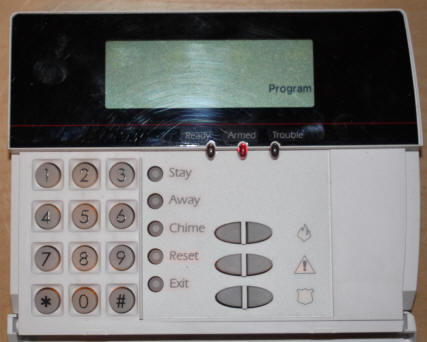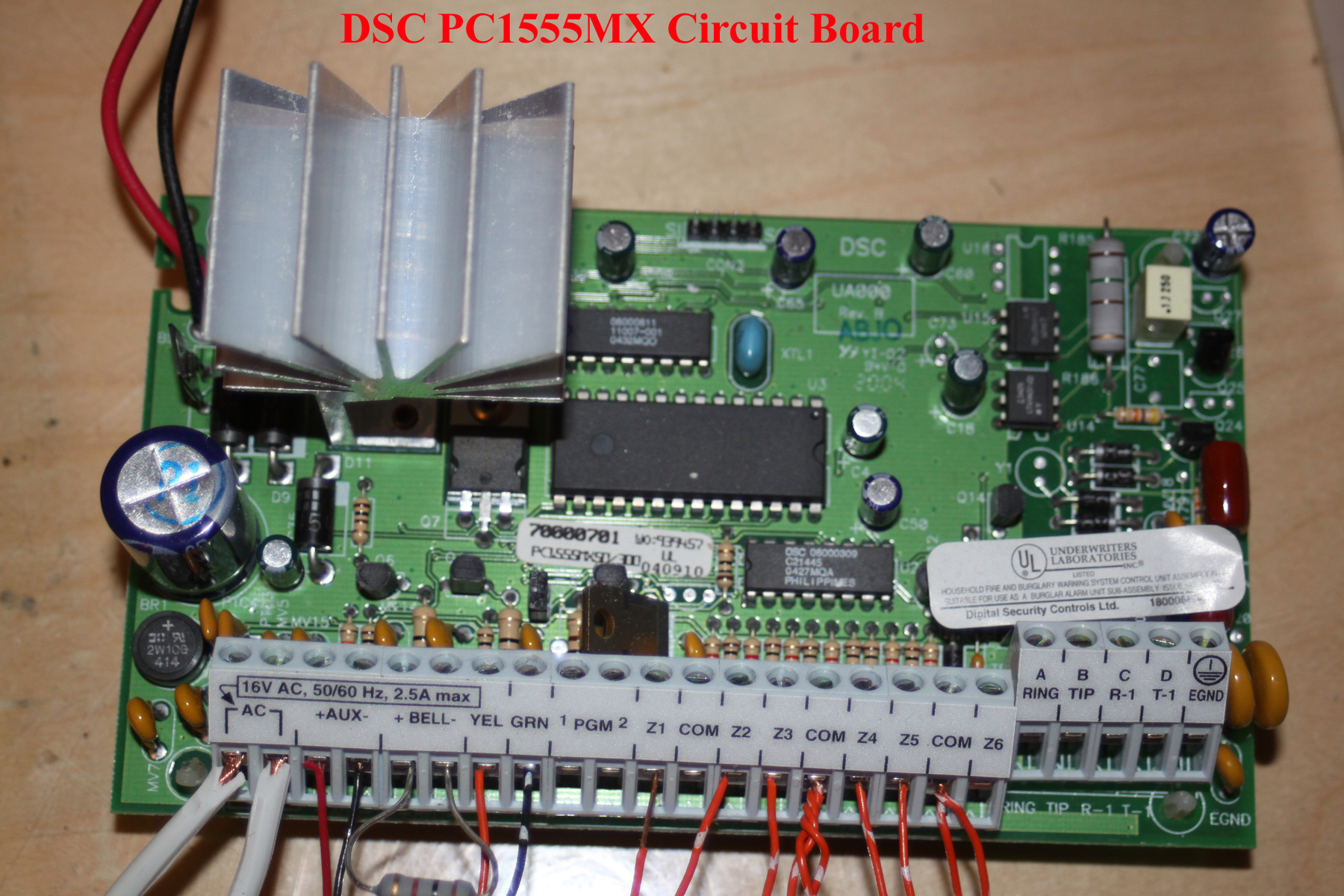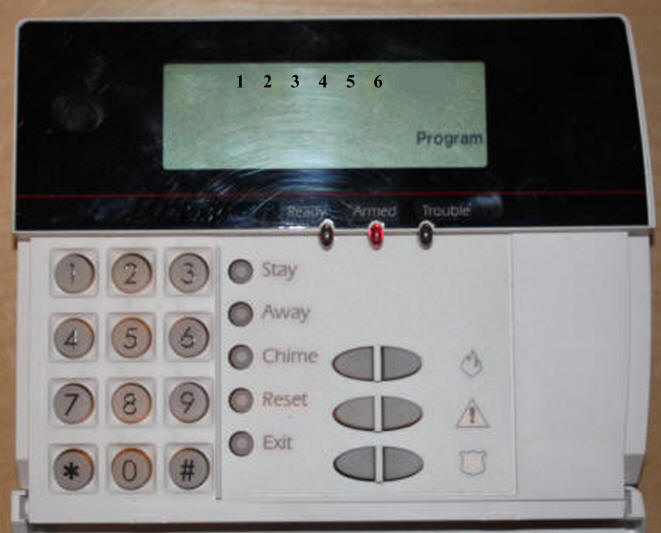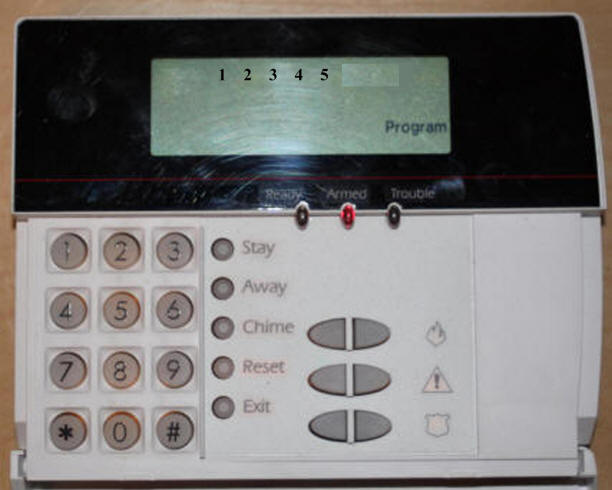
Shared Knowledge
"Digital Security Controls (DSC) Power632 Security System (Circuit Board PC1555MX)"
"How to Define Zones and Operational Parameters of Zones"
28 March 2011
Summary: must know the "Current Installer Code." The Power632 (Circuit Board PC1555MX) supports 6 zones (additional with an add-on zone module(s)). Each zone has operational parameters that must be define. There are only 3 programming steps to define zones and zone parameters and certainly can be done do-it-yourself (DIY).
Background:
The Digital Security Corporation (DSC) Power632 home security system supports both wired and wireless sensors or detectors.
Detectors are grouped, usually by physical proximity, into "zones."
The circuit board PC1555MX of the Power632 home security system supports 6 independent zones.
The Power632 does not support wired and wireless detectors or sensors in the same zone.
Each "zone" of the PC1555MX can have different operational characteristics such as: instant alarm, delayed or 24 hour surveillance.
To define or change characteristics of zones, you must know the "Current Installer Code."
The default "Installer Code" is 5555.
To define "zones" and parameters of zone there are 3 steps:
1. Define which zones are operational (enabled or disabled).
2. Define the operational characteristics of each zone.
3. For wired zones, define the configuration of the wiring.
Defining zones:
At a keypad enter
* 8 "Current Installer Code" (If you do not know of any other "Installer Code", use the default of 5555)
If the "Current Installer Code" you entered is correct, you will see the liquid crystal display (LCD) light the "Armed" light emitting diode (LED) and the word "Program" or an icon will be shown on your LCD.

If the keypad does not go into the programming mode, the "Current Installer Code" you entered is invalid. See Below.
Now enter
991 # #
What you have just done is to "unlock" the PC1555MX board so it can accept programming changes.
Now you need to program enable or disable zones but which zones are being used by your system?
Go to the Power632 metal cabinet and open it.
Along the bottom of the PC1555MX circuit board is a terminal strip. Each hole in the terminal strip is marked along the edge although you might have to look closely to see the markings.

A wired zone has 2 wires associated with it. One wire goes to a "Z" terminal and the other wire to the "COM" terminal.
In the image above, zones 1, 2, 3, 4 and 5 have wires in them, meaning zones 1, 2, 3, 4 and 5 actually connect to installed wired detectors of some type.
Z6 (zone 6) does not have a wire and thus zone 6 is not being used for wired detectors.
In your installation, you could have wires in all 6 zones, only 1 zone or anything in between.
Now a DSC keypad enter
* 8 "Current Installer Code" 202

You LCD display will now shows the number 1 through 6 which correspond to zones. If you have an LED display, LED lights corresponding to zone numbers will light.
In the image above, all 6 zones of the system are enabled for use.
But in the PC1555MX image above, there was no wire in the zone 6 so zone 6 needs to be program disabled.
To disable any zone, press the number of the zone on the keypad.
The number or corresponding LED will go out.
To disable zone 6, press 6

To enable a zone, press the corresponding keypad number.
To enable zone 6, press 6

Zones are enabled or disable then via a "toggle" operation. By pressing the number 6 when 6 was displayed, turned out the number 6 and disabled zone 6 while the press of the number 6 again, forced the number 6 or zone 6 to be enabled.
Once you have enabled or disabled all applicable zones, enter
# #
Wireless zones:
The DSC Power632 can support wireless devices via the attachment of a wireless receiver.
One DSC wireless receiver supports up to 32 wireless devices.
The Power632, circuit board PC1555MX, can not support both wired and wireless devices in the same zone.
In the "defining zones" section above, zone 6 was disabled as it was not being used by wired devices.
Operational characteristics?
On each window there is installed what is known as a magnetic reed switch. This switch consists of 2 parts: a magnet attached to the window and a normally open (NO) or normally closed (NC) reed switch attached to the window frame that has wires on it that go back to the PC1555MX circuit board and are attached to a zone and a common (COM) terminal.
When the system is armed, should the window move, the magnet attached moves away from the reed switch and the switch opens or closes, depending on it type and the PC1555MX detects an intrusion and sounds the bell (siren).
In this case, the operational characteristics of the zone containing window reed switches should be set to "install alarm", meaning at intrusion, the bell is sounded immediately.
But "install alarm" is not the zone characteristic you want on a door with an associated keypad.
In the case of an exterior door with a keypad, you want to arm the system via the keypad, open the door and then leave and obviously you do not want the system to sound the bell as soon as you open the door to leave so the zone containing an exterior door must have the operational characteristic of "Delay 1".
In all, the Power632, circuit board PC1555MX allows 27 different types of zone characteristics although most are not applicable to a typical home.
The most commonly used zone characteristic include:
00 Null zone (not used)
01 Delay 1 (amount of time is programmable) (Digital Security Controls (DSC) - Power632 (PC1555MX) - How to Set Various System Times)
02 Delay 2 (Digital Security Controls (DSC) - Power632 (PC1555MX) - How to Set Various System Times)
03 Instant (applicable to window reed switches)
04 Interior (applicable to motion detectors)
08 Standard 24-hour Fire (wired)
09 24-hour Supervisory (system does not have to be armed for intrusion detection)
10 24-hour Supervisory buzzer (Keypads must be installed in this zone characteristic)
88 Standard 24 hour fire (Wireless)
Now knowing which zones are in use or enable, you must determine which detectors are attached to which zones.
In most cases, the only odd detectors will be smoke (wired or wireless), motion detectors and glass break detectors.
It is possible that any one zone has a mix of detectors such as wired smoke, window switches, door switches, etc.
Once you think you know what is wired or wireless to a zone, you must program the characteristics of the zone.
At a keypad, enter
* 8 ("Current Installer Code")

Now enter
001
You now enter 6, 2-digit numbers. Each 2-digit number corresponds to the characteristic of a zone.
For example, zone 1 contains the main entry door and thus must have a "delay 1" characteristic or the 2-digit number 01.
Zones 2,3,4 and 5 are all "instant" because they are window reed switches so zones 2, 3, 4, and 5 get the 2-digit number 03.
Finally, zone 6 is not used so it has the 2-digit number 00 for "null."
So I now enter
01 03 03 03 03 00 # #
If a wireless receiver is attached to the PC1555MX and zone 6 is used for wireless, enter
01 03 03 03 03 88 # #
Wired zones wiring configuration:
As referred to above, window reed switches can be of the normally open (NO) or normally closed (NC) type.
In a normally open type reed switch, the magnet on the window keeps the contacts inside the reed switch separated such that there is no "short" in reed switch wires.
Once the window magnet moves away from the reed switch, the spring action in the reed switch causes the switch to close creating a short in switch wiring.
In a normally closed type reed switch, the magnet on the window keeps the contacts inside the reed switch connected such that there is a short in switch wiring as long as the window magnet is close enough to the switch.
Once the window magnet moves away from the reed switch, the spring action inside the reed switch causes the switch to open or no longer have a wiring short.
The circuit board PC1555MX inside the DSC Power632 can detect either an open or a short in window reed switch wiring but must know the normal or no-intrusion state or condition: normally open or normally closed.
Ok, so which type of reed switch is installed in your system?
Go to the Power632 metal cabinet and open it.
With the power adapter removed from the outlet and the red terminal removed from the backup battery, remove the wires associated with one wired zone (zone and com terminal).
Now use a continuity tester or a voltmeter set for continuity. If the zone tests shorted, then the reed switches are of the normally closed type.
If the zone tested indicates an open, then the type of reed switch installed is the normally open.
Reattach the wires of the zone tested to the zone and com terminals.
Reattach the red wire to the battery.
Plug the power adapter back into the outlet.
Set system time and date via a keypad.
At a keypad enter
* 8 ("Current Installer Code") 013
Keypad zone wiring:
If "Current Installer Code" does not work:
If when you try to get the Power632 into the programming mode, it will not go, then the "Current Installer Code" you know is invalid.
Your options at this point are:
- Contact the previous homeowner and learn "Current Installer Code".
- Contact the security system company that installed your system and try to learn "Current Installer Code" from them.
- If you learn a new or different code, try to use it to get the Power632 to go into the programming mode.
- Attempt to do a PC1555 hardware reset. Digital Security Controls (DSC) - Power632 (PC1555MX) - How to Hardware Reset